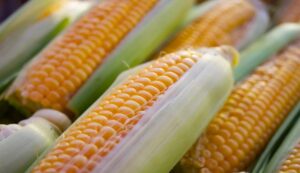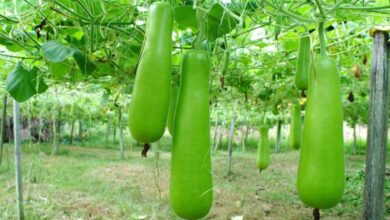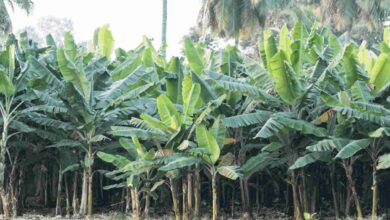Maize Cultivation: Cultivate these varieties of corn, they give good yield in less time
Maize Cultivation: Farmers are now able to increase productivity and improve nutrition thanks to the improved and hybrid maize varieties developed by agricultural experts. The Central Variety Release Committee has allowed the growing of these varieties in different parts of the country. Some of these varieties have higher provitamin A content, while other varieties have higher levels of high-quality protein.

Let us learn about the main features of these varieties:
1. Pusa HM 8 Unnat (Hybrid Variety)
The hybrid maize variety Pusa HM 8 Unnat was made available on August 25, 2017. States like Andhra Pradesh, Tamil Nadu, Karnataka, Telangana and Maharashtra have all found it suitable for cultivation. This variety is planted in the Kharif season.
This maize will be ready in about 95 days. It can produce up to 92.6 quintals per hectare, with an average yield of 62.6 quintals per hectare. MAS technology was used in the development of this variety. It is high in high-quality protein, as it contains 1.5 to 2.0 cent lysine and 0.3 to 0.4 cent tryptophan.
2. Pusa Super Sweet Corn 1 (Hybrid Variety)
On December 26, 2018, this sweet corn variety was notified (S.O. 6318 (E)). It can be cultivated in almost every Indian agricultural region. It is a crop grown during the Kharif season. Depending on the region, the average production of this variety can range from 75.3 to 101.6 quintals per hectare. If the right care and agricultural techniques are used, its potential production can be between 105.1 and 126.6 quintals per hectare.
The crop takes 74 to 81 days to mature. This variety is unique as it has the recessive shrunken-2 gene, which increases its sweetness. Its quality is revealed by a Brix rating of up to 15.9%.
3. Pusa HM 4 Unnat (Hybrid Variety)
This variety was released on August 25, 2017. It can be grown in the plains of Uttarakhand, Punjab, Haryana, Delhi and western Uttar Pradesh. It is a Kharif season crop. This variety can produce up to 85.7 quintals per hectare, but its average yield is 64.2 quintals per hectare. The crop ripens in about 87 days.
This variety is unique in that it is developed using MAS technology. It has high-quality protein with significant amounts of important amino acids, including tryptophan and lysine. Apart from this, it is a very good variety in terms of nutrients.
4. Pusa HM 9 Unnat (Hybrid Variety)
This variety was released on August 25, 2017. Farmers of Bihar, Jharkhand, Odisha, West Bengal and eastern Uttar Pradesh find it suitable. It is a Kharif season crop. This variety gives an average yield of 52.0 quintals per hectare, but with the right care, it can produce up to 74.1 quintals per hectare. It takes about 89 days for this crop to mature. The main feature of this variety is that MAS technology was used in its development. Its high content of important amino acids like tryptophan (0.68%) and lysine (2.97%) improves its nutritional value.
5. Pusa Vivek QPM 9 Unnat (Hybrid Variety)
This variety of maize was introduced on August 25, 2017. It can be grown in the northeastern states, Himachal Pradesh, Uttarakhand (a hilly region) and Jammu and Kashmir. It is a crop grown during the Kharif season. The potential production of this variety can range from 79.6 to 98.0 quintals per hectare, with an average yield of 55.9 to 59.2 quintals per hectare. This crop takes 83 to 93 days to mature. Its main feature is that it is the country’s first provitamin-rich maize variety. With 8.15 ppm provitamin A, 2.67% lysine and 0.74% tryptophan, it is very beneficial from the nutritional point of view.
Techniques to manage maize crops agronomically
Seed sowing rate and sowing distance
- Twenty kg of seed per hectare is sufficient for sowing maize.
- It is advisable to maintain a distance of 60 to 75 cm between rows and 18 to 20 cm between plants.
- Fertiliser Management: Use 100:60:40:25 kg/ha NPK+Zn in maize for a satisfactory yield.
- Irrigation: To ensure a high yield, irrigate the crop, especially during flowering and grain formation stages.
- Weed control: As soon as the seeds are sown, mix 1 to 1.5 litres of Atrazine in 800 litres of water. This controls weeds.
- Disease control: If symptoms of Maydis disease or downy fungus are seen in the crop, then mix 2.5 kg of Zineb in 1000 litres of water and mix it.
Pest control
- Use Phorate or Fipronil for stem borer management.
- Use Fipronil 5G to control termites.





